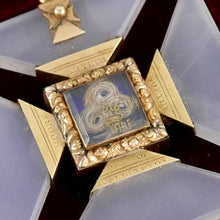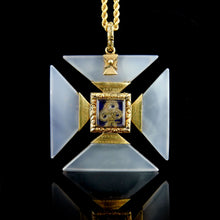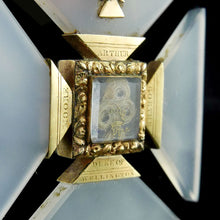Wellington, Goethe & Moore - A Maltese Cross Pendant, 1852
- Regular price
- £6,400
- Sale price
- £6,400
- Regular price
-
- Unit price
- /per
Adding product to your cart
43mm x 43mm
Chalcedony, gold and crystal. A Maltese cross with chalcedony arms centred on a rectangular crystal compartment with chased floral gold border containing locks of human hair worked into a trefoil, the base of each arm of the cross gold mounted and inscribed clockwise from the top ‘ARTHUR’ / GOETHE / DUKE OF WELLINGTON / MOORE’. for Arthur, 1st Duke of Wellington (1767-1852), Johann Wolfgang Goethe (1749-1832), and most probably the Irish poet Thomas Moore (1779-1852).
Read more
There are few themes that connect the Britain’s greatest general with Germany’s greatest literary figure and an Irish poet who his best remembered today for losing Lord Byron’s memoirs. Perhaps amongst the more obscure is the Yo-Yo (aka the ‘quiz’ or ‘bandalore’ as the Yo-Yo was known in the British Isles). The Yo-Yo craze of the 1790s was disseminated by French emigres fleeing the horrors of the French Revolution. The poet Moore tell us that that the Duke of Wellington was not above amusing himself publicly with the instrument during a committee meetings of the Irish House of Commons; while Goethe commented disparagingly on the fad in his Venetian Epigrams of 1790.
The practice of preserving the hair of a loved one as integral element of a piece of mourning jewellery dates back many centuries. It was also a means of displaying allegiance, as was the case of the rings distributed amongst the faithful supporters of Charles I following his execution in 1649. Hair jewellery reached the height of its popularity in the late 18th and early 19th centuries at a time when many hair artists and wig makers had too little employment due to powdered wigs going out of fashion. Both Nelson and Napoleon are known to have owned hair jewellery, but it was Queen Victoria who especially popularised it. By the mid 19th century wearing such jewellery often said as much about the mourner as the mourned. The owner of the present cross was evidently an individual not only of wealth and high status but one with impressive social connections.












